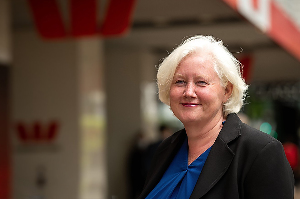
The country’s outstanding mortgage book is the shortest it has been in 13 years.
Eighty one percent of borrowings will reprice in the coming 12 months and fixing decisions are not as clear cut as this sort of positioning would imply, Mike Jones, BNZ’s chief economist says.
Almost half – 47% – of all new mortgage lending in November was on a floating term, mainly preferred by investors.
If new borrowing wasn’t on floating terms in November, it was for short fixed terms such that only 6% of new lending during the month was for a term of 12 months or more.
Jones says it seems reasonable to assume these trends continued at least through December given the Reserve Bank’s guidance toward a February 0.50% cash rate cut would have still been ringing in borrowers’ ears.
This ongoing rush into shorter terms has slowly but surely tilted the stock of existing mortgage debt. The share of the mortgage book on floating rates has lifted from 10% to 15% while the share of outstanding mortgage borrowing with a maturity of less than 12 months is now 81%. In data going back to 1999 that’s only been matched once before, in 2011/12.
“To date, going short has tended to pay off given aggressive cuts to the cash rate and associated falls in mortgage rates.”
“Last year, borrowers broke with historical precedent and positioned for the rate cutting cycle well in advance of it turning up. That’s even though it cost more upfront to do so, Jones says.
Mortgage holders will continue to benefit to the extent there are further reductions in the OCR along the lines of recent forecasts.
These imply, at face-value, six month and one-year mortgage rates falling below 5% by about mid-year.
Holding short term means risks
At the same time Jones says he is compelled to offer a few competing viewpoints.
First, a borrowing strategy concentrated at shorter terms means a higher share of future interest expense is ‘at risk’.
“This isn’t necessarily a bad thing of course. But it does increase exposure to any unanticipated shocks in a year in which we could see a few. The volatile start to the year in financial markets is a reminder of such.”
Second, a swathe of Reserve Bank cash rate cuts is already factored into interest rates where they stand.
This presents both risks and opportunities, Jones says.
“For example, expectations of a much lower OCR in six months’ time means six-month fixed mortgage rates are about 1.3% lower than floating rates.
“Given this, we’re a little surprised the preference to float is so strong. Floating has the benefit of extra flexibility, but the large rate difference increases the bar to breaking even relative to fixing for a six-month term.
Chunky rate cut expectations are also holding term mortgage rates like the two-year below those of shorter- terms.”
He says the former encapsulate market expectations of a longer period of a lower OCR. But this also means the hurdle for further trend declines in these term rates is higher.
“The point is that, while mortgage borrowing for short terms may make sense given the potential for additional short-term rate relief, to us, fixing for longer than a year does not look as unappealing as the current meagre demand would imply.”
That is, for the two-year rate to fall further from here requires not just the OCR be cut further, but that existing expectations for more than 1% worth of cuts are dialled up.
“This plays to the grain of our view that there is still some downside in two and three year term rates but probably not as much as some think.
“It’s something to think about for those on short terms as they ponder an appropriate time to term-out some of their debt,” Jones says.
Added to this is the fact that remaining on short-terms costs more upfront, with the ultimate benefit – being able to roll onto lower rates in future – uncertain.”
A simplified example illustrates the point – the monthly and cumulative cost of fixing today for either two-years or six months on a hypothetical $500,000 mortgage.
Fixing for two-years at the current rate of about 5.5%, entails a constant $2300 monthly interest cost.
Fixing for six-months at a higher rate of about 6.1%, on the expectation a borrower can hopefully re-fix at lower rates in future.
The BNZ has assumed the first six-monthly refix in August 2025 is at 4.9% and the second in February 2026 at 4.8%.
While the cumulative interest cost “worm” on the six-month option eventually falls below the two-year one, but: 1) it takes a while – until January 2026 – and, 2), that relies on the decent falls in six month rates the bank has assumed.
“This analysis also makes no allowance for the extra utility a borrower might get (sleep quality?) under the more highly hedged, two-year fixed scenario,” Jones says.
“The point is that, while mortgage borrowing for short terms may make sense given the potential for additional short-term rate relief, to us, fixing for longer than a year does not look as unappealing as the current meagre demand would imply.”
He says the country is only 23 days into 2025 but the fact that this year is looking particularly unpredictable highlights the point. There are risks aplenty.





Comments
No comments yet.
Sign In to add your comment